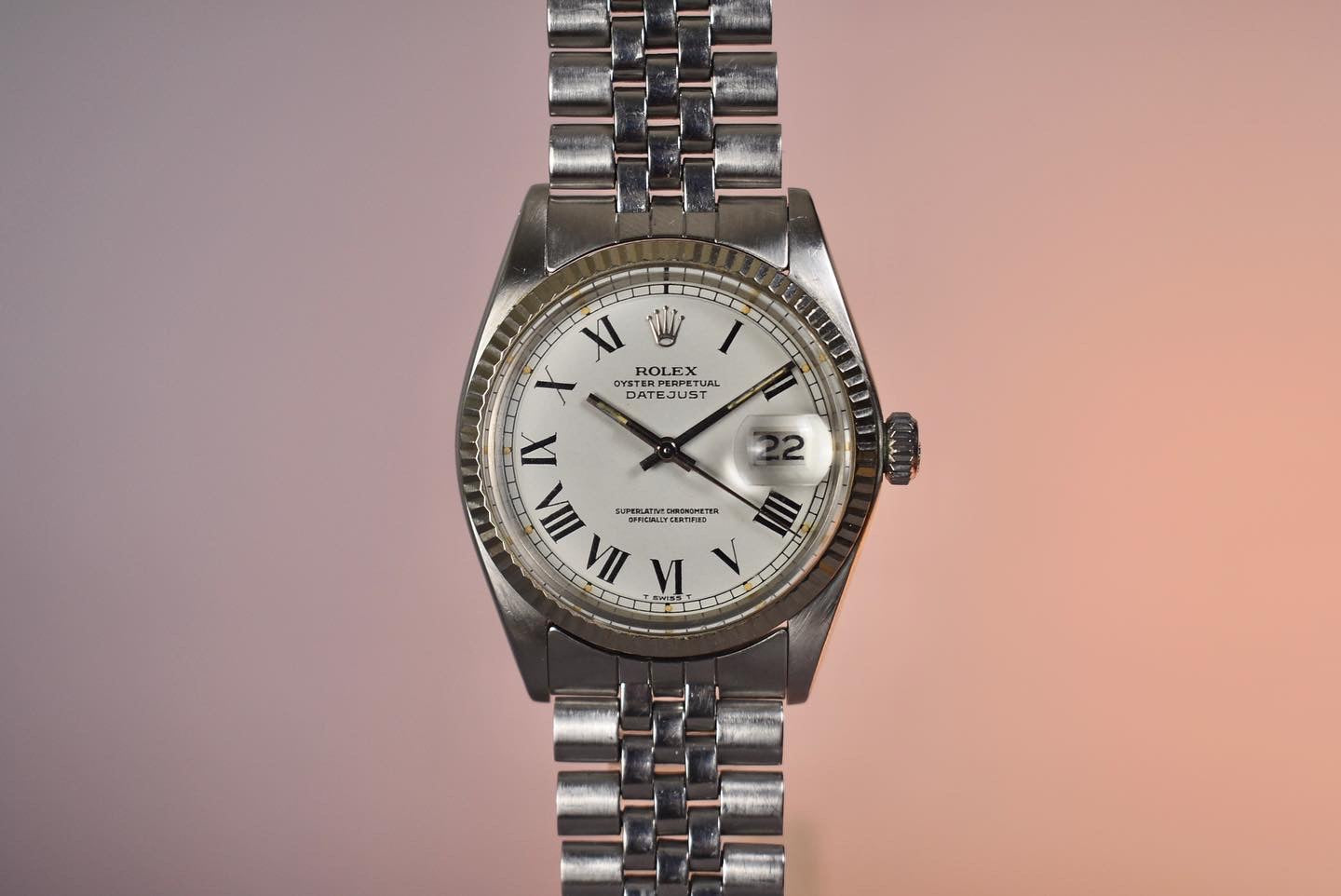J. Heffner | IG @pinaplwtchs
A 2 min read into one of the more posh Rolex dial variants
Dial variations drive the vintage Datejust and Day-Date markets. In a world of common, albeit crisp, stick hands and indices, not much is more interesting than the bold Roman Numerals of a Buckley Dial.
Produced primarily during the 1970s and 1980s, these dials contrast the more traditional Rolex design by featuring printed numerals as the hour indices.
Buckley Dials come in a myriad of different colors, and some even feature painted hands (once thought to be a myth). One aspect they all have in common is the lines in which they’re found - Datejusts and Day-Dates.

A white Buckley dating to 1974
How the Name Came to be
These dials are coined after the namesake of John Buckley, a known dealer and collector of New York’s W. 47th Street.
In a recent interview, Buckley described how these printed Roman dials were rather uncommon among collectors. To follow suit with other Rolex monikers (namely Paul Newman and Patrizzi dials), he jokingly declared these as Buckley Dials after the popularity of the ‘John Mayer’ Daytona. The name ‘Buckley Dial’ just stuck over the years and it’s now popular Rolex lingo.
This nickname gave these Rolex dials some provenance in the watch community, and now they even carry a slight premium when compared to other more common examples.
A Closer Look
The most common Buckley Dials are the gold and white configurations. While the blue variant remains one of the rarest, these dials have become more popular with collectors where a generalized aspect of rarity is now applicable to the line. This flux in popularity is even prompting fakes to be produced - a process more achievable with printed dials.
Alongside the added class of a Buckley Dial, those with custard patina remain the most coveted. While the sharpness of the case, bracelet, and bezel are factors to be considered, most of the value behind these are with the dial’s condition. Simply put, the more beautiful, the more valuable.

A sharp case and clean dial are a recipe for collectability with these four & five digit references
While it’s most common finding the Buckley Dial adorned with an ornate bezel and classic jubilee, some of the more rare examples include those with a smooth bezel or oyster bracelet. These don’t pop up on the market often, and are usually in the form of a white Buckley.
These dials continue to remain a staple in the Rolex collecting community. They are a way to add some chic to an otherwise common Rolex without an inherently scary premium. As the community grows seemingly everyday, Buckley dials will not only become less common in the wild, but will continue to increase the delta in price between their traditional cousins.
I hope this short, yet informative article gives a clear, concise look into what a Buckley Dial is, where the name originates, and a collector’s outlook into an ever-changing market.


Leave a comment